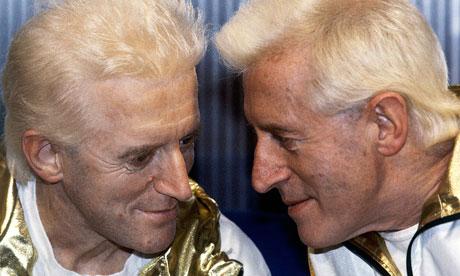Jimmy Savile Scandal: the Evil We Do in Giving Celebrities a Free Pass
By Deborah Orr
There are many lessons to be learned from the Jimmy Savile scandal. One of the more simple ones, surely, is that celebrity shortens the arm of the law. Yet Scotland Yard has said to the media that it expects to arrest "up to a dozen" household names soon. What can this achieve, beyond providing chances to dump computers, hire a lawyer or get on a flight to Thailand? Part of the reason Savile and others were able to prey on young people with impunity was that their word was always considered more valuable than those of their victims. The point when sympathy for Peter Rippon, the man who halted the Newsnight investigation into Savile's crimes, evaporated was when it emerged that he'd dismissed the collaborative testimony of four of Savile's victims as "just the women", adding for good measure that, 40 years ago, 14 years old was "not too young" to be a girl in a special school, manipulated and bribed into sexually servicing a powerful man. How appalling. Such behaviour is utterly reprehensible, whatever age a preyed-upon person is. For under-16s, then as now, it is immoral and illegal. The age and gender of the people who complained about Savile was viewed, even last November, as somehow a mitigation of his behaviour, when those, along with his celebrity, were actually details that abetted him in both his exploitation and his ability to get away with it. These "household names" still have that advantage. And they've been tipped off that any day now, their advantage can be played once again. Britain's obsession with celebrity is beginning to look not just silly, but extremely dark, even evil.
|
.
Any original material on these pages is copyright © BishopAccountability.org 2004. Reproduce freely with attribution.
